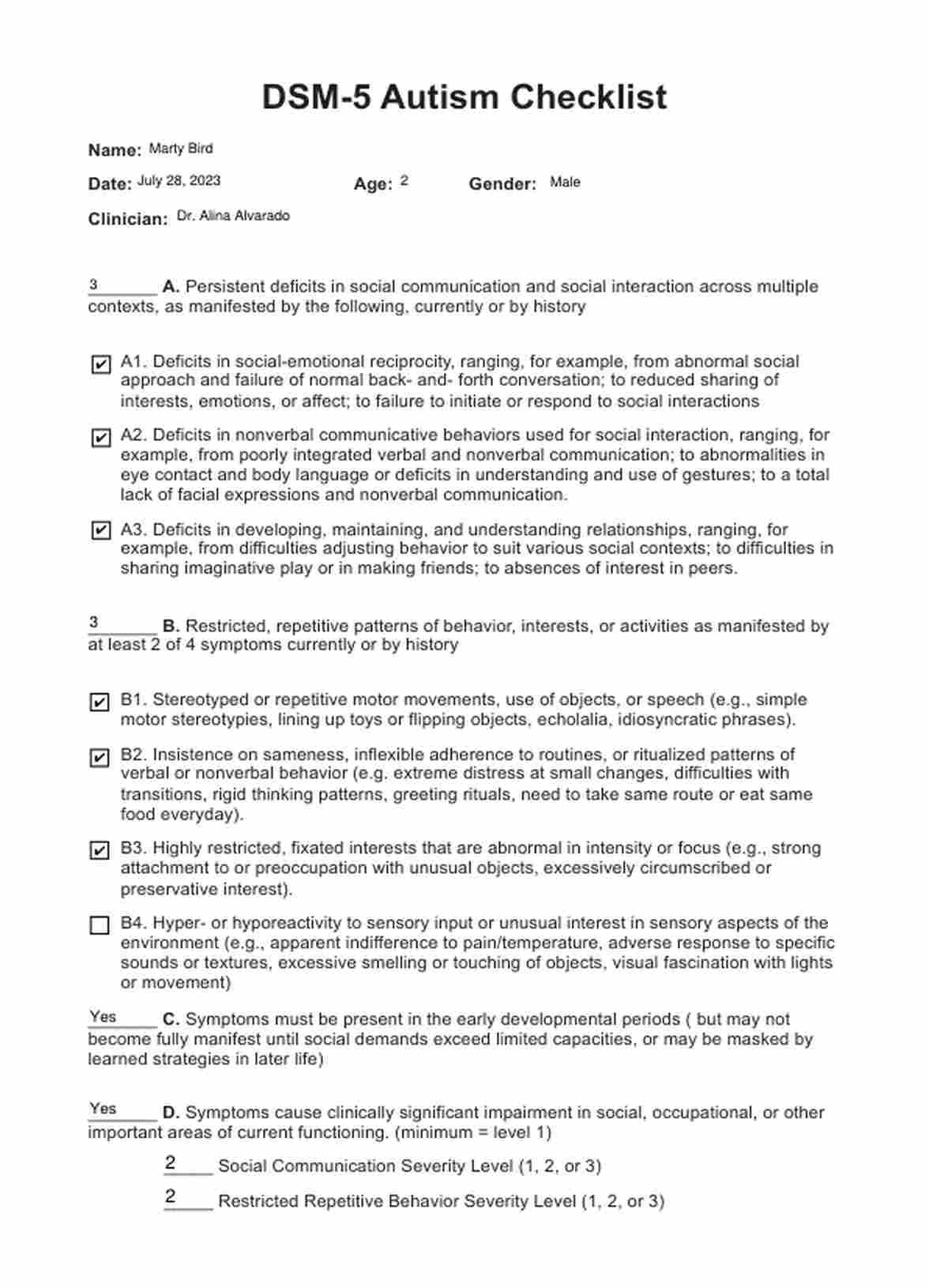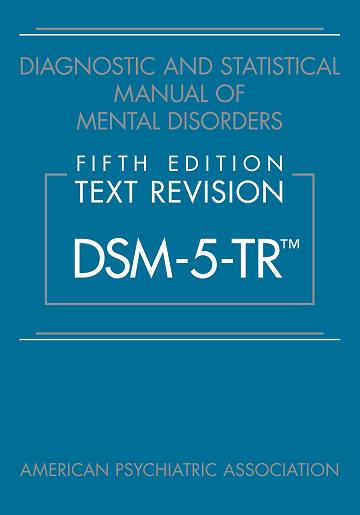When you hear the term “Autism Spectrum Disorder DSM V Code,” you might feel a bit overwhelmed. But don’t worry—you’re not alone.
Understanding what this means is crucial for anyone who wants to support loved ones or even themselves. You might be a parent, a teacher, or someone just curious about autism. Whatever brings you here, this article will break down the complexities of the DSM V code in a way that makes sense.
By the end, you’ll have a clearer picture of what Autism Spectrum Disorder is and why this code is so important. Your understanding can make a real difference in recognizing and supporting individuals with autism. So, let’s dive in and explore what this all means for you and those you care about.

Credit: www.carepatron.com
Understanding Autism Spectrum Disorder
Autism Spectrum Disorder, identified by the DSM V code, involves a range of developmental differences. Individuals may experience challenges in communication and social skills. Understanding these can help in providing the necessary support and care.
Understanding Autism Spectrum Disorder Autism Spectrum Disorder (ASD) is a complex developmental condition. It affects how individuals perceive the world and interact with others. Understanding ASD is crucial for fostering inclusive environments and supporting those with the disorder. ###
Characteristics And Symptoms
ASD is marked by a range of characteristics and symptoms. These can vary widely among individuals. Some might have difficulty with communication, while others may excel in specific areas like math or art. Many people with autism may have repetitive behaviors. They might prefer routines and struggle with changes. You might notice someone avoiding eye contact or having a unique way of speaking. Each person with autism is different, and their symptoms can change over time. One person’s experience with autism might be completely different from another’s. Have you ever wondered how such diverse symptoms are all under the same umbrella of ASD? ###
Developmental Challenges
Individuals with ASD often face developmental challenges. Social interactions can be particularly difficult. Some might not understand social cues or might find it hard to make friends. Communication is another area where challenges can arise. People with autism may have trouble expressing themselves or understanding what others say. This can lead to misunderstandings and frustration. These developmental challenges require patience and understanding from those around them. Imagine if every interaction was a puzzle for you—how would you feel? Supporting someone with ASD involves recognizing these struggles and adapting to meet their needs. In embracing the uniqueness of those with autism, you can create more supportive environments. How can you contribute to a world where everyone feels understood and accepted?

Credit: neurodivergentinsights.com
Dsm V Diagnostic Criteria
The DSM V outlines the criteria for diagnosing Autism Spectrum Disorder. It includes challenges in social communication and repetitive behaviors. The code helps professionals identify and treat individuals with autism effectively.
The Diagnostic and Statistical Manual of Mental Disorders, Fifth Edition (DSM V) provides guidelines for diagnosing Autism Spectrum Disorder (ASD). This manual offers a detailed outline to help professionals identify ASD. Understanding the DSM V criteria is crucial for accurate diagnosis and support.
Changes From Previous Versions
DSM V introduced significant changes from earlier versions. It combines several disorders under the umbrella of ASD. This includes Asperger’s syndrome and pervasive developmental disorder. Earlier versions treated these as separate conditions. The DSM V approach considers the spectrum nature of autism. This shift streamlines diagnosis and treatment.
Criteria For Diagnosis
The DSM V outlines specific criteria for ASD diagnosis. It identifies two main areas of concern. Social communication challenges form the first area. Individuals may struggle with verbal and nonverbal communication. They might find it hard to form relationships. The second area involves repetitive behaviors and restricted interests. These can include routines and focused interests. Symptoms must be present from early childhood. They should impact daily functioning. Diagnosis requires a comprehensive evaluation. This ensures a correct understanding of the individual’s needs.
Dsm V Code For Autism
Understanding the DSM V Code for Autism is crucial for both parents and professionals navigating the complexities of Autism Spectrum Disorder (ASD). This code provides a standardized way to identify and categorize autism, aiding in diagnosis and treatment planning. Knowing how this classification works can help you advocate for the right support and interventions.
Classification And Coding
The DSM V, or the Diagnostic and Statistical Manual of Mental Disorders, provides a framework for diagnosing autism. It categorizes autism as a spectrum, acknowledging the wide range of symptoms and behaviors. The code for autism spectrum disorder is 299.00.
This classification emphasizes the variability in ASD, from challenges in social communication to repetitive behaviors. The code serves as a guide for clinicians, ensuring consistency in diagnosing and understanding autism’s diverse manifestations.
Have you noticed variations in how autism presents in different individuals? This code aims to capture that diversity, offering a more nuanced approach than previous editions. It ensures that each person gets recognized for their unique needs.
Implications For Treatment
The DSM V code for autism significantly impacts treatment strategies. With a standardized diagnosis, professionals can tailor interventions to specific symptoms rather than a one-size-fits-all approach.
This personalized treatment can enhance outcomes, focusing on areas that need the most support. It encourages the use of evidence-based practices, ensuring interventions are grounded in research and effectiveness.
Are you considering treatments for someone with ASD? Understanding the DSM V code can guide you in choosing interventions that truly resonate with the individual’s needs. It paves the way for a more targeted and effective treatment plan.
Impact On Individuals And Families
Autism Spectrum Disorder DSM V Code affects daily life for individuals and their families. Challenges include communication difficulties and social interaction struggles. Families often face emotional and financial stress while seeking support and resources.
Autism Spectrum Disorder, classified under the DSM V code, profoundly impacts individuals and families. Each person with autism experiences the world uniquely, presenting both challenges and moments of unexpected beauty. Families often navigate a landscape filled with learning, adaptation, and growth. The journey can be complex, yet deeply rewarding.
Daily Life And Social Interactions
Daily life for individuals with autism can be a balancing act. Routine is often a comforting anchor, helping manage anxiety and sensory overload. Yet, even minor disruptions can feel overwhelming. Social interactions may require extra effort. While some with autism thrive on social connections, others may find them exhausting. Picture a child who loves playing with friends but struggles with unspoken social cues. These moments can be both joyful and challenging. Families often become experts in interpreting their loved one’s unique communication style. Imagine a mother who learns to recognize her child’s subtle cues for needing a break. This skill strengthens bonds and enhances understanding.
Support And Resources
Support and resources are crucial for navigating autism. Early intervention programs can make a significant difference, providing tools for development and growth. Have you considered what resources are available in your community? Community support groups offer families a space to share experiences and strategies. Connecting with others who understand can reduce feelings of isolation. Parents often exchange tips, like using visual schedules to ease transitions. Professional resources, including therapists and educators, play a key role. They help tailor strategies that meet individual needs. For example, speech therapy can enhance communication skills, opening new possibilities for engagement. Finding the right balance of support requires time and patience. Yet, with persistence, families can discover a network that empowers them to thrive. What steps can you take today to access the support you need?
Current Research And Developments
Autism Spectrum Disorder (ASD) has garnered significant attention in recent years, leading to a surge in research and development efforts. The DSM-V code serves as a critical tool for diagnosing and understanding ASD, but what about the innovations and future directions that could reshape the landscape of autism treatment? Current research reveals promising avenues that not only aim to improve therapies but also provide hope for individuals and families affected by ASD. Let’s dive into some of these exciting developments.
Innovations In Therapy
Recent studies emphasize the importance of personalized therapy approaches. Researchers are exploring how technology can enhance traditional therapeutic methods. For instance, virtual reality is emerging as a tool to help individuals with ASD practice social interactions in a controlled environment.
Another innovation is the use of AI-driven apps, designed to track progress and adapt to individual needs. These apps offer real-time feedback, which can be invaluable for therapists in tailoring sessions. Imagine having a tool that understands your unique challenges and adjusts accordingly.
Additionally, there’s a growing focus on sensory-friendly environments. Creating spaces that reduce sensory overload can significantly impact the effectiveness of therapy sessions. Have you ever noticed how a calm setting can change your mood? The same principle applies here.
Future Directions
Looking ahead, researchers are keen on understanding the genetic components of ASD. They’re investigating how genetics might influence treatment responses. This could lead to breakthroughs in personalized medicine, where therapies are tailored to an individual’s genetic makeup.
Moreover, collaboration between disciplines is becoming more prevalent. Psychologists, neurologists, and educators are working together to develop comprehensive intervention plans. Have you considered how a multidisciplinary approach could enhance the support system for those with ASD?
There’s also a push towards early intervention strategies. Studies suggest that starting therapy at a younger age can lead to better outcomes. This raises the question: could early diagnosis be the key to unlocking potential in children with ASD?
As research continues to evolve, so do the possibilities for improving the lives of individuals with ASD. What advancements are you most excited about in this field?

Credit: a4.org.au
Frequently Asked Questions
What Is The Dsm-5 Code For Autism?
The DSM-5 code for autism is 299. 00. It falls under the category of Autism Spectrum Disorder (ASD). This code is used for diagnosing and categorizing autism-related conditions.
What Is The Dsm-5 Autism Spectrum Disorder?
The DSM-5 defines autism spectrum disorder as a neurodevelopmental condition. It involves challenges in social interaction, communication, and repetitive behaviors. Diagnosis requires symptoms present in early childhood, affecting daily functioning. Treatment includes therapy and support tailored to individual needs. Early intervention improves outcomes for individuals with autism.
What Is The Code For Autism Spectrum Disorder?
The ICD-10 code for autism spectrum disorder is F84. 0. The ICD-11 code is 6A02. These codes help in diagnosing and billing autism-related services.
What Is The Diagnosis Of Autism Spectrum Disorder?
Autism spectrum disorder diagnosis involves observing behavior, developmental history, and may include interviews and standardized tests. A team of specialists, including psychologists and neurologists, typically conducts the evaluation. Early diagnosis is crucial for effective intervention and support.
Conclusion
Understanding Autism Spectrum Disorder with the DSM V code is vital. It helps in identifying and supporting individuals better. Families and educators can create supportive environments. Simple, accessible information makes a big difference. Awareness leads to better community inclusion. Sharing knowledge fosters acceptance and understanding.
Everyone deserves to feel valued and understood. Let’s continue to learn and support each other. Doing so builds a more inclusive world. Every effort counts in making lives better. Recognize the unique strengths of individuals with autism. Embrace diversity for a kinder society.
Keep learning, keep growing.
